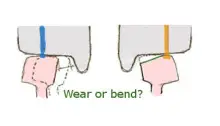Stock rail geometry optimisation
The hunt for equilibrium The railway vehicle use wheelsets formed of a pair of steel wheels fixed rigidly on an axle. This setup makes the wheels move together on track. The system evolved in time to what we know today: tronconic wheel profiles with inside flanges, rail profiles and inclination, bogies, suspensions and so on.…














